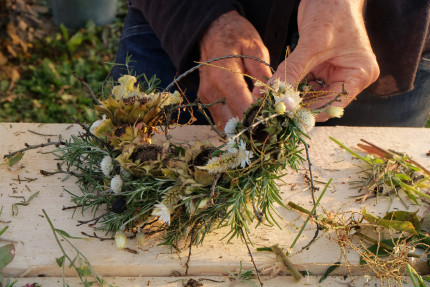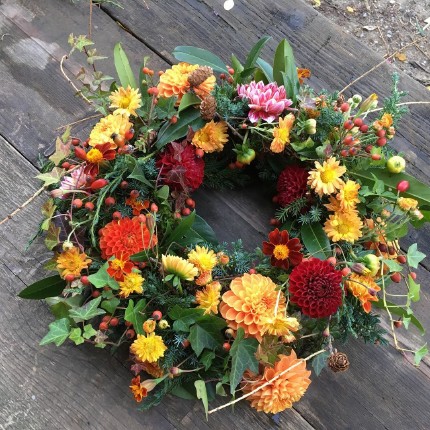WREATH MAKING
Wreath making has a long tradition in human history. Wreaths were made as crowns to honour and protect their wearers, in the same way as door wreaths intended to protect and of course decorate houses all year round. In Greek and Roman culture, wreaths signified glory, victory and blessing, and in Christianity they are a sign of victory over death. The wreath itself is a circle with no beginning and no end, and is linked with eternity and immortality. The word “wreath” is derived from the old English word “wriða” (“to wind around, bind”). You can find lots of the materials for wreaths in your own garden, such as evergreen branches, leaves, berries, cones and fruits such as rosehips. In late autumn and winter, evergreen branches help us to forget the cold and make a lovely contrast to any snow on the ground. Evergreen branches symbolise hope and rebirth, and they are strong plants that defy the winter. Even in pre-Christian times, people decorated their houses and doors in winter with pine, spruce and other branches that were intended to bring luck, blessing, peace and prosperity. The Advent wreath with four candles is a symbol of the struggle of Christian people against the darkness of life, uniting all the key positive symbols of this quiet time.

PHOTO: MARGRIT DE COLLE

